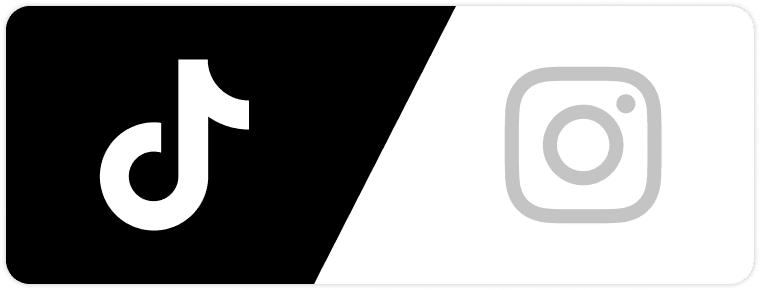Social media isn’t just about fun videos and viral trends anymore. It’s now a powerful tool for learning. From classrooms to remote learning spaces, teachers and students are using platforms like Instagram, TikTok, and X (formerly Twitter) to share ideas, explain concepts, and stay connected.
As more schools embrace digital tools, social media is proving it can boost engagement, creativity, and even academic performance—when used the right way.
Let’s look at how social media posts can be useful in modern education and why students and teachers should explore this exciting space.
Students Are Already There
Most students use social media every day. So instead of seeing it as a distraction, schools are starting to meet students where they already are.
When learning happens on familiar platforms, it feels more natural. A student might skip a textbook chapter—but they’ll watch a 30-second TikTok explaining the same topic with a fun visual or catchy audio.
Teachers can take advantage of this by creating short, creative posts that feel less like school and more like everyday content. This makes learning more approachable and keeps students engaged. And with platforms like social media for college students becoming more popular, the educational potential is bigger than ever.
Short Posts Make Learning Easier
Social media is built for quick, easy-to-understand messages. This makes it perfect for turning big topics into smaller lessons.
Think of it like this:
- A long chapter on the water cycle becomes a simple animated video.
- A confusing grammar rule becomes a fun Instagram Reel.
- A timeline of historical events turns into a carousel post or infographic.
This bite-sized learning style helps students remember key points without getting overwhelmed.
It’s especially helpful for visual learners or students with shorter attention spans. And when content is entertaining, students are more likely to share it—which helps others learn too.
Great for Class Announcements
Teachers can use class accounts or private groups to keep students up to date. Whether it’s a homework reminder, schedule change, or event announcement, social posts are often more effective than emails.
Students check their social feeds constantly. So when schools post quick reminders or updates, they’re much more likely to reach their audience.
Plus, class accounts can help build a stronger community. Celebrating birthdays, sharing achievements, or just posting a fun class moment adds warmth and personality to school life.
Some teachers even collaborate with educational platforms like DoMyHomework.net to help students manage workload better and support learning in a more personalized way.
Gives Quiet Students a Voice
Not every student likes speaking up in class. Social media can help those students share their ideas in ways that feel more comfortable.
For example, a teacher might ask students to:
- Post a tweet summarizing a reading
- Create a TikTok explaining a science concept
- Share their thoughts in a private class discussion group
This kind of participation helps all voices be heard—not just the loudest ones in the room. It also builds confidence and encourages creativity.
For shy or hesitant students, asking questions anonymously or sharing reflections in safe forums like r/AskAcademia can also offer a supportive entry point into academic discussions.
Makes Learning More Real
What’s happening in the world right now matters to students. Social media brings real-world content into the classroom in a way that textbooks can’t always match.
Let’s say a trending video shows people discussing climate change. That could be the starting point for a class debate, project, or research assignment.
Or maybe a meme is circulating about a math trick—why not break it down together and explore how it works?
Social media helps teachers connect school lessons to real-life situations. That makes learning feel more relevant—and much more interesting.
At the same time, students should be aware of how to protect privacy on social media, especially when interacting with public posts or creating educational content.
Encourages Creative Assignments
Traditional essays and tests still have their place, but creative assignments get students thinking differently.
Instead of a standard paper, a teacher might ask students to:
- Create a story on Instagram about a historical figure
- Film a TikTok re-enacting a scene from a play
- Design an infographic for a science topic
These assignments teach the same concepts but give students more freedom. They can show what they’ve learned in ways that feel personal and fun.
And they gain digital media skills along the way—something every student needs today. In fact, as shared in this breakdown of student writing, social media is helping students write better, express themselves more clearly, and connect with audiences beyond the classroom.
Turning Social Media Into a Classroom Tool
When teachers turn social media into a classroom tool, students respond. Instead of handing out worksheets, some teachers post open-ended questions on class accounts and ask students to respond with short comments or video replies.
Others use Instagram Stories to share quick facts, run polls about upcoming topics, or give sneak peeks into new units.
These are the kinds of things students check on their own anyway, so learning becomes part of their normal routine.
Some schools have even created private TikTok accounts just for class content. It might seem unconventional, but it works—especially with students who are already on the platform every day.
Examples of Educational Social Posts That Work
Here are a few types of posts that teachers and students are using right now:
- “This or That” polls on Instagram to preview lessons (“Which would you rather explore—space or the ocean?”)
- TikTok explainers where students act out the process of photosynthesis or the causes of a historical event
- Thread-style reflections on Twitter about current news and how it connects to class topics
- Short video challenges that encourage students to summarize key ideas in 15 seconds or less
The beauty of social media is that you can be playful while still being educational. That balance keeps students engaged while helping them understand important ideas.
Boosting Memory Through Repetition
We all know how easy it is to forget something we read once. That’s where social media really shines—it naturally encourages repetition.
When a lesson becomes a meme or a recurring hashtag, students see it over and over. Without even realizing it, they start remembering the material better.
For example, a teacher might create a series of weekly posts about vocabulary words. Each week, a new word appears with a fun definition or usage. Students see it in their feed, maybe even share it, and the word sticks.
That kind of passive learning can make a big difference over time.
A New Way to Study Together
Group studying isn’t always easy to organize, especially if students live far apart. But with social media, studying can happen anytime, anywhere.
Students often create private group chats or Discord servers where they drop notes, ask questions, and quiz each other with flashcards. Others use Instagram DMs to help a classmate who missed a lecture or post short summaries from their notes.
Some even post short videos of themselves explaining tricky concepts—like a mini-lesson for their friends. This peer-to-peer teaching helps everyone understand the topic better, including the person explaining it.
Encouraging Accountability and Motivation
It’s easy to put off homework or feel overwhelmed by big assignments. But social media can provide a little motivation boost.
Students sometimes post about their academic goals—like finishing a research paper or studying for finals—and get support from friends or classmates. Others take part in “study challenges” or tag each other in content that encourages productivity.
Just seeing other people making progress can be enough to get someone started. When students use social media to support each other, they become more accountable and more confident.
Teaching Critical Thinking in a Digital Age
Social media also gives teachers a chance to teach media literacy. Since students are already online, it’s important they know how to tell good information from bad.
Teachers can turn real posts or trending content into class discussions:
- Is this post factual or opinion-based?
- Who posted it, and why?
- What sources does it link to?
These conversations help students think critically about what they’re seeing online, which is a vital skill in today’s world.
Creating a Digital Portfolio
Students can also use social media to build a portfolio of their work. By collecting their posts, projects, or videos in one place, they create a record of their learning journey.
A simple Instagram account, blog, or even a public TikTok page can serve as a creative resume. It shows what the student has learned, how they think, and what makes them unique.
This can be helpful for college applications, internships, or even just building confidence in their abilities.
The Role of Teachers as Digital Guides
For all of this to work well, teachers need to act as guides—not just content creators. They don’t have to be social media stars, but they should feel comfortable enough to lead students through the digital space.
That means helping students:
- Use respectful and safe communication online
- Understand how to credit sources
- Avoid plagiarism or misinformation
- Manage their time and attention wisely
When teachers set the tone and offer guidance, social media becomes a much safer and more effective learning tool.
Managing Risks the Right Way
Of course, using social media in education isn’t perfect. There are risks like distraction, bullying, or sharing too much information.
That’s why it’s important to set clear rules. Schools and teachers should:
- Keep accounts private if needed
- Limit interaction to class hours
- Use closed platforms or learning management systems when privacy is essential
When managed properly, the benefits far outweigh the risks.
The Future of Learning Is Social
We’re just getting started when it comes to using social media in education. As platforms evolve and new tools emerge, teachers and students will find even more creative ways to connect.
Whether it’s a class podcast, a shared Instagram account, or a student-run blog, social media lets students take charge of their own learning.
It’s not about replacing traditional education. It’s about enhancing it—making it more relevant, more engaging, and more flexible for everyone involved.
Final Thoughts
Social media is more than just a way to pass the time—it’s a bridge to better learning.
By using platforms students already love, teachers can spark curiosity, build community, and create learning experiences that feel fresh and exciting. At the same time, students gain confidence, improve their writing and communication skills, and develop habits that will help them in school and beyond.
The key is balance: combining educational goals with digital tools in a way that’s thoughtful and meaningful. When done well, social media doesn’t distract from learning—it amplifies it.
The future of education is interactive, creative, and social. Let’s build it together.





